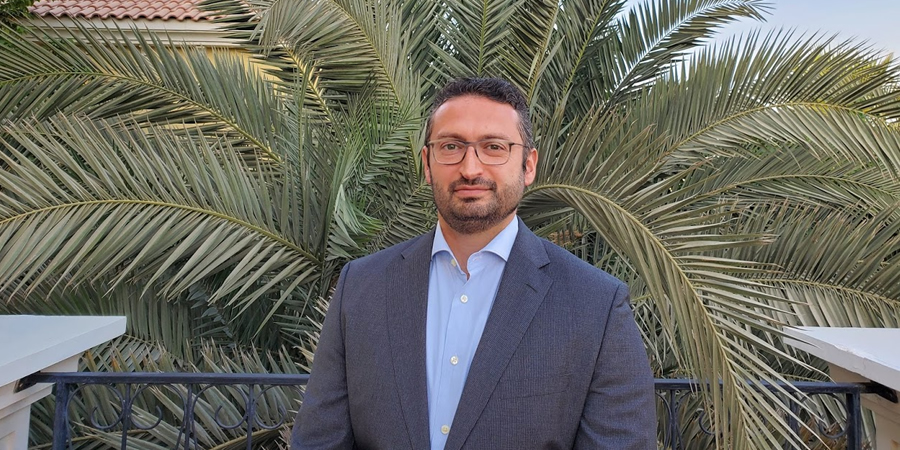Accelerating 5G strategies throughout the Middle East and Africa region (MEA) has seen Spirent’s role as a test and measurement provider evolve to include critical live network partner. Today, operators, governments and enterprises alike are looking to the company to help assure performance, keep networks secure and support successful virtualization strategies. In his new role as regional sales lead for Spirent, Tareq Darwish Al-Haji is at the forefront of the company’s work on this front.
Spirent has just released its annual global 5G market insights report. What are some of the major trends the company uncovered in its latest work? What implications do they have on the MEA market?
In 2020 alone, we had over 600 global 5G engagements. This represented a 140% increase versus the previous year. Despite some industry delays imposed by COVID-19, our latest report reveals overall that operators worldwide are moving full steam ahead with plans. Notably, efforts to deploy a 5G core have accelerated, as we predicted last year, as more stakeholders seek to overcome the limitations of 5G non-standalone, move the needle on 5G revenue and really start to deliver for the enterprise.
The MEA region saw its share of early delays but has navigated those initial murky waters and is on track with 5G core deployments beginning to pick up. This is driving interest, particularly, in areas of service assurance, cybersecurity and virtualization. We’re also seeing challenges related to physical limitations give way to advanced interest in “as-a-service” type offerings for lab and testing.
Spirent has gone through a metamorphosis of sorts. How has the company’s work over the past few years prepared it for this moment?
We have decades of experience in lab-based testing. Early on in the 5G planning phases, we recognized that the overwhelming complexity introduced by a mix of physical and virtual networks, the exponential expansion of touchpoints to test and secure, and the diverse demands of new mobile customer bases demanded we evolve how we work with customers. This has meant considerably expanding our testing, validation, assurance and security capabilities for the live network. We know today our customers don’t need products, they need solutions. They need guidance from experts who have already seen the challenges they’re facing. They need partners that will stay by their side as they proceed on the 5G journey. It just so happened that the challenges unleashed by COVID and the acceleration of 5G core efforts created overwhelming need for the level of support we positioned early to deliver. Whether that’s providing our award-winning 5G network digital twin solution to conduct deep, expansive next-gen network testing in real world scenarios or standing ready to take on dynamic testing needs that have exponentially increased in complexity, we are ready.
Are operators truly ready to turn over such critical aspects of network testing and development to partners?
If you asked me this question two years ago, I’d have said over time, this would be an inevitability. We’ve actually been surprised to see desire to move in this direction increase so much faster than anticipated. Market realties are demanding that these types of engagements be explored. Operators truly have their hands full with so many 5G network requirements and decisions as they balance consumer market requirements and competitive pressures against a desire to make inroads with discerning enterprise buyers that will ultimately look to the cloud if telecom cannot deliver. Operators are looking across the business to see where they can offload infrastructure costs. They’re reassessing where they have core expertise and where partners can lighten the load for them. 5G testing requirements, which are dynamic and ever-evolving as more pieces of the network puzzle come into place, represent exactly such an area where operators are ready to evolve how they do business. We’ve already kicked off a number of high priority global as-a-service engagements and have had a number of advanced MEA-based discussions on the topic.
Beyond test, what are some of the emerging areas of work for Spirent in 5G?
Our activity in service assurance has surged over the past year and 80 percent of that business is now driven by 5G. In previous network generations, assurance was an afterthought. Now, networks are being planned with assurance built in from the beginning. There is too much that can go wrong in today’s distributed and dynamic networks, greatly increasing the need to be able to determine root cause and a solution as quickly as possible. Assurance is now a proactive tool aimed at protecting experiences, eliminating manual cycles spent addressing challenges and assuring that the network will be able to support bullet-proof demands of enterprise users.
Similarly, on the security front, as the number of attack surfaces expands, and the stakes are higher for certain applications like smart cities and connected vehicles, the need to secure networks becomes a number one imperative. Our approach of emulating 5G networks to conduct proactive, wargame-type testing on networks has been an important advancement for telecoms stakeholders.
Finally, our work in virtualization testing is beginning to take off as more operators move networks to the cloud or adopt a hybrid model. This also ties into our security work and represents an ever-evolving need as these networks are actually launched and begin supporting service delivery.
As Spirent looks out over the next year, what is your primary focus in MEA?
It seems every week brings another major 5G deal with customers racing more gear and software into networks to stand up the 5G core. We have global experience on this front that we are leveraging to help ensure operators in the region successfully navigate deployments with networks that perform as intended and meet the needs of an expanding customer base.










